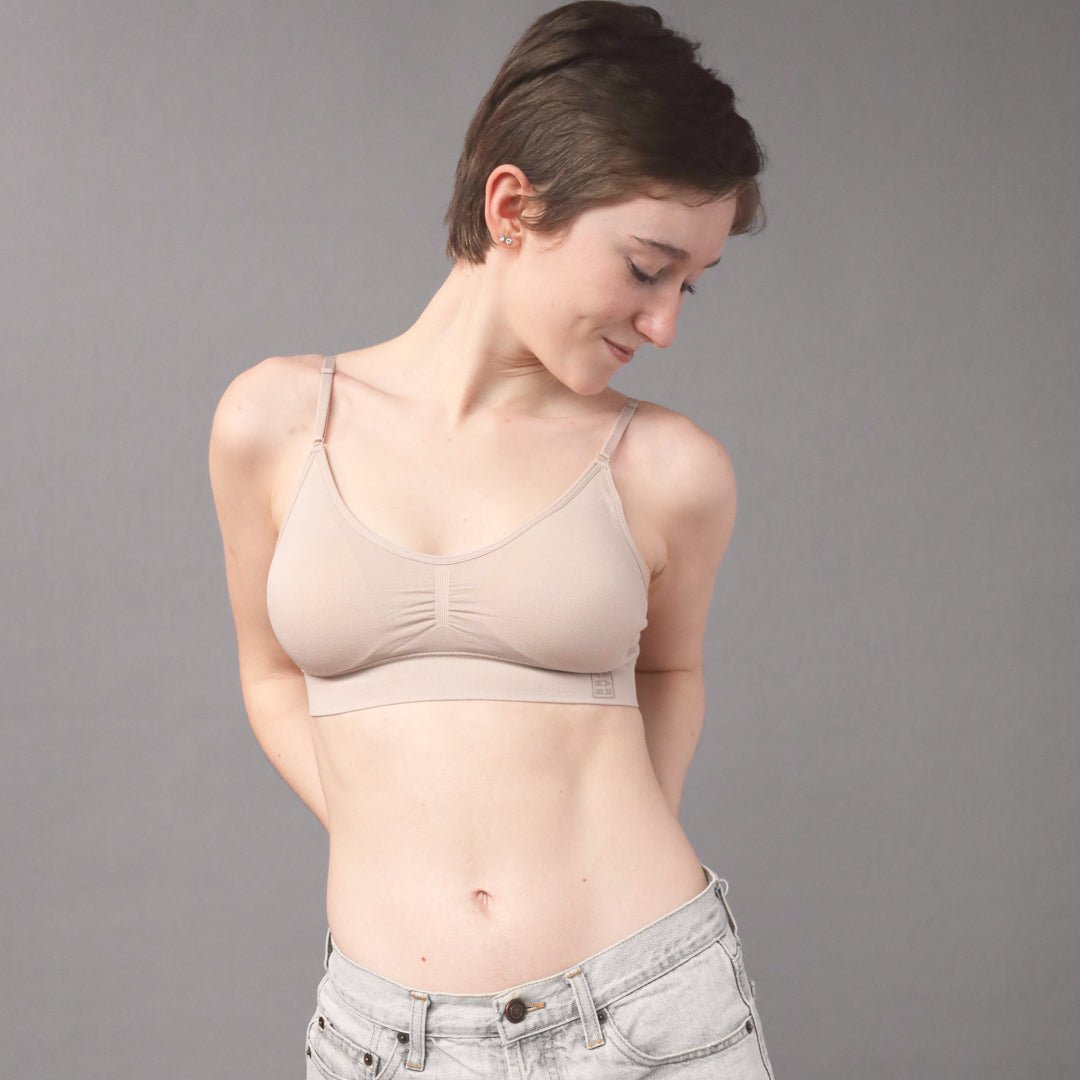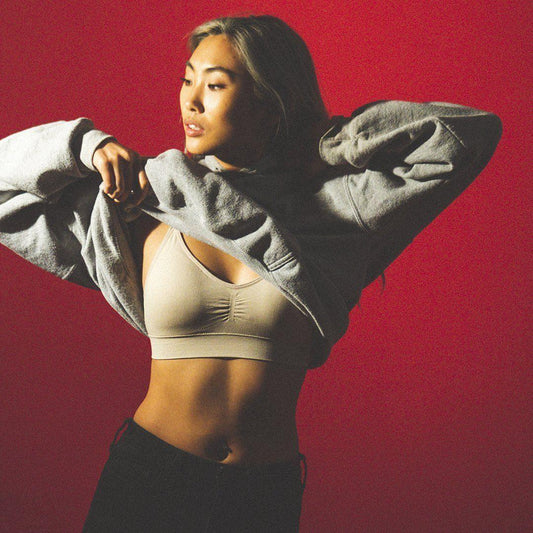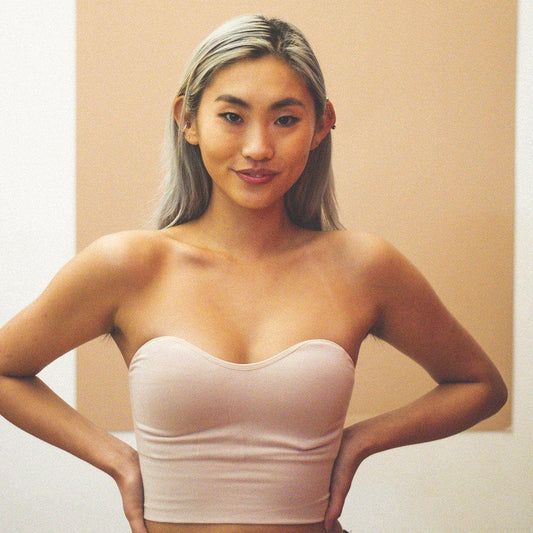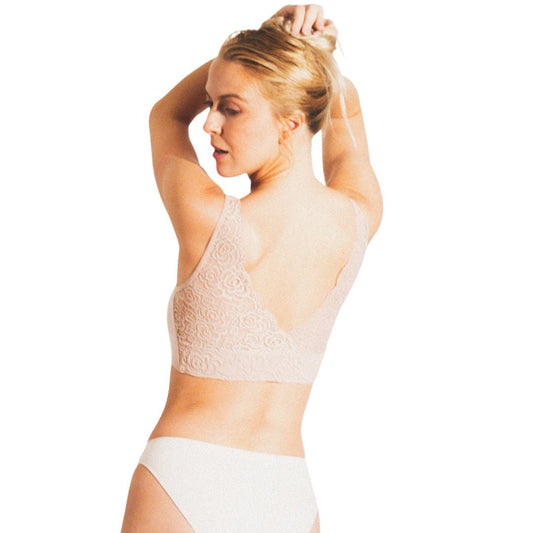
From A to DDD: Emma’s Journey to Understanding Bra Sizes and Finding the Perfect Fit
Emma’s Journey to Understanding Bra Sizes and Finding the Perfect Fit from A to DDD:
Welcome to the world of bra sizes, where the alphabet holds the key to finding the perfect fit! Emma, like many women, has struggled to decipher the mysteries of bra sizes. Whether you're a petite A cup or a curvaceous DDD, understanding the different bra sizes can revolutionize your lingerie game. For Emma, it wasn’t just about aesthetics - finding the right size enhanced her comfort, support, and overall confidence. But with so many letters and numbers to decipher, Emma found herself lost in the bra size maze. This is her journey through the world of bras, where she discovered what each letter and number means, and how they impacted her bra shopping experience. Get ready to embrace your curves and discover the perfect fit that will make you feel fabulous, no matter your cup size!
The Importance of Wearing the Right Bra Size
Emma quickly learned that wearing the right bra size is more than just a matter of aesthetics – it's about comfort and well-being. She realized that many women, like herself, underestimated the impact of an ill-fitting bra on their daily lives. A bra that's too tight or too loose can cause discomfort, pain, and even long-term health issues. Emma found that the right bra size provided the necessary support for her breasts, helping to alleviate back and shoulder pain, improve posture, and prevent sagging.
When Emma wore a bra that fit properly, it enhanced her body shape and boosted her confidence. It made her clothes fit better, improved her posture, and even changed the way she carried herself. The right bra size also enhanced her body image, allowing her to embrace her curves and feel more comfortable in her own skin. For Emma, it wasn’t just about the numbers and letters – it was about finding the perfect fit that made her feel like the best version of herself.
Understanding Bra Sizing and Measurements
Emma knew that bra sizing could be confusing, but she also knew that understanding how it works was essential to finding the right fit. Bra sizes consist of a combination of letters and numbers that represent the band size and cup size. The band size refers to the measurement around the ribcage, just below the breasts, while the cup size indicates the volume of the breasts.
Emma learned that band sizes are typically measured in inches, ranging from 28 to 54 or more, depending on the brand. Cup sizes, on the other hand, are represented by letters from A to DDD and beyond. Each letter corresponds to a specific difference in breast volume, with A being the smallest and DDD being one of the largest cup sizes available. It’s important to note that cup sizes are not static – they change in relation to the band size. For example, a 34D has a larger cup volume than a 32D.
Common Misconceptions About Bra Sizes
Emma discovered several common misconceptions about bra sizes that led to confusion and frustration. One of the most prevalent misconceptions was that an A cup is the smallest size and a D cup is the largest. In reality, cup sizes are relative to the band size, so a 32A is smaller than a 36A, even though they both have an A cup. Another misconception was that a D cup is considered large, when in fact, it’s just an average-to-fuller bust size.
Emma also learned that the letter itself does not determine the size of the breasts. The cup size is a relative measurement that represents the difference between the bust circumference and the underbust circumference. So, a woman with a 34D cup size may have a different breast size compared to another woman with the same cup size. Understanding these misconceptions helped Emma remove the stigma and pressure associated with bra sizes and allowed for a more accurate understanding of her own body.
Different Bra Size Systems Around the World
As Emma continued her journey, she discovered that while the most widely recognized bra size system is the one used in the United States, there are different size systems used around the world. For example, in the UK, bra sizes are typically represented by letters from A to K, with K being one of the largest cup sizes available. In Europe, the band size is measured in centimeters, and the cup size is represented by letters from A to I. Emma realized it’s important to note these differences when purchasing bras internationally or online.
Additionally, some brands may have their own unique sizing systems, which can further complicate the bra shopping experience. Emma always referred to the brand’s size guide or consulted with a professional fitter to ensure the best fit. Understanding the different bra size systems helped Emma navigate the options available to her and ensured a more accurate fit.
Exploring the A to DDD Bra Size Range
Now that Emma had a better understanding of bra sizing and measurements, she explored the A to DDD bra size range in more detail. She found that the A cup is the smallest cup size available, often suited for individuals with smaller breasts or those who prefer a more natural and minimalistic look. As she moved up the alphabet, the cup volume increased, providing more coverage and support.
Emma discovered that the D cup, often associated with a fuller bust, is considered one of the larger cup sizes. However, it’s important to remember that cup sizes are relative to the band size, so a 32D will have a different volume compared to a 38D. The DDD cup, also known as an E cup in some sizing systems, is even larger and offers more support for those with a fuller bust.
Emma noted that the A to DDD range is not exhaustive, and there are larger cup sizes available beyond DDD. These sizes are often referred to as “extended sizes” and are designed to accommodate individuals with a fuller bust. It’s essential to have a wide range of sizes available to cater to the diverse needs and preferences of women.
How to Measure Your Bra Size Accurately
Measuring her bra size accurately was crucial for Emma in finding the perfect fit. While she always recommended having a professional fitting done, she also measured herself at home using a measuring tape. To measure her band size, Emma wrapped the tape snugly around her ribcage, just below her breasts, ensuring it was parallel to the ground. She took note of the measurement in inches.
Next, Emma measured her bust size by wrapping the tape around the fullest part of her breasts, making sure it was level and not too tight. She took note of this measurement as well. To calculate her cup size, Emma subtracted her band size from her bust size. For example, if her band size was 34 inches and her bust size was 38 inches, the difference was 4 inches, which corresponded to a D cup.
Emma knew that these measurements were just a starting point, and trying on bras in different styles and sizes was crucial to finding the perfect fit. Additionally, factors like breast shape, tissue density, and personal preferences all impacted how a bra fit and felt. Emma didn’t get discouraged if she had to try on several bras before finding the right one – it was all part of the journey to finding her perfect fit.
Signs That You May Be Wearing the Wrong Bra Size
Wearing the wrong bra size had a significant impact on Emma’s comfort and well-being. She learned to recognize these signs that she may be wearing the wrong bra size:
-
Band riding up: If the band of her bra rode up her back, it was a sign that it was too big. The band should sit horizontally and snugly around her ribcage, providing support without digging in or riding up.
-
Cup spillage: If her breasts were spilling out of the cups or creating a “double boob” effect, it was a sign that the cups were too small. The cups should fully encase her breasts without creating any bulges or discomfort.
-
Straps digging in: If her bra straps were digging into her shoulders, it was a sign that her bra might not be providing enough support. The majority of the support should come from the band, not the straps.
-
Gapping cups: If there was a noticeable gap between her breasts and the cups of her bra, it was a sign that the cups were too big. The cups should lay flat against her breasts, with no gaps or wrinkles.
-
Overall discomfort: If she constantly felt uncomfortable or found herself adjusting her bra throughout the day, it was likely that she was wearing the wrong size. A well-fitting bra should be comfortable and supportive, allowing her to go about her day without any distractions.
Finding the Right Bra for Her Shape and Style Preferences
Finding the right bra went beyond just the size for Emma – it was also about finding the right style and shape that complemented her body. Different bra styles offered varying levels of support and coverage, and it was important for Emma to choose a style that suited her needs and preferences.
For individuals with smaller breasts, teen bralettes and push-up bras provided a natural-looking lift and enhanced the bust. T-shirt bras were a great option for everyday wear, as they offered a smooth and seamless appearance under clothing. For those with a fuller bust, bras with underwire and wider straps provided additional support and minimized discomfort.
When it came to style preferences, Emma found that there was a wide range of options to choose from. From lace and embroidery to bold colors and prints, bras could be a reflection of her personal style and mood. Emma didn’t hesitate to experiment and try different styles – she was often surprised at what suited her best.
Tips for Bra Shopping and Trying on Bras
Bra shopping could be a daunting task, but with these tips, Emma felt well-prepared to find the perfect fit:
-
Know your measurements: Before she started shopping, Emma measured herself accurately to have a starting point for her size. She kept in mind that sizes could vary between brands, so it was essential to refer to each brand’s size guide.
-
Try different styles: Emma didn’t hesitate to try on different styles and shapes to find what worked best for her. What worked for someone else might not necessarily work for her, so she kept an open mind and was willing to experiment.
-
Seek professional fitting: If possible, Emma visited a lingerie store and got a professional fitting. The expertise of a fitter helped guide her towards the right size and style for her body.
-
Consider your wardrobe: Emma thought about the types of clothing she usually wore and chose bras that would work well with her wardrobe. For example, if she often wore low-cut tops, a plunge bra was a better option.
-
Trust your instincts: Ultimately, the most important factor in finding the right bra was how it felt on her. Emma trusted her instincts and chose a bra that made her feel comfortable, supported, and confident.
The Impact of Wearing the Right Bra Size on Comfort and Confidence
Wearing the right bra size had a profound impact on Emma’s comfort and confidence. A well-fitting bra provided the necessary support for her breasts, minimizing discomfort and pain. It allowed her to move freely and go about her day without any distractions.
In addition to physical comfort, wearing the right bra size boosted Emma’s confidence. When she felt supported and comfortable in her lingerie, it translated into how she carried herself and interacted with the world. The right bra size enhanced her body shape, improved her posture, and made her clothes fit better, ultimately boosting her overall confidence.
Conclusion
Understanding the world of bra sizes was the key to finding the perfect fit that made Emma feel fabulous, no matter her cup size. It was important to remember that bra sizes were not static – they changed in relation to the band size and could vary between different brands and sizing systems. By measuring herself accurately, trying on different styles, and trusting her instincts, Emma found the right bra that provided the support, comfort, and confidence she deserved. She embraced her curves, explored the options available, and enjoyed the transformative power of a well-fitting bra. For more detailed guidance, Emma checked out the fit guide and explored the collection of bras for all shapes and sizes.




